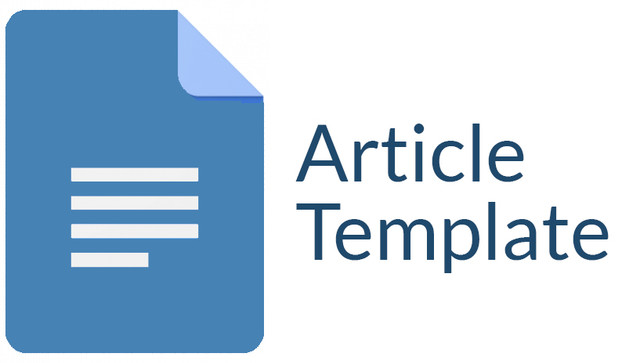Evaluasi Penerapan Manajemen Waktu pada Proyek Pembangunan Gedung Workshop Pembelajaran Ketrampilan SMKN 1 Magetan
Keywords:
Time management, Time scheduling, Building constructionAbstract
In building construction, it is not uncommon for service users to place many demands on construction service providers, one of which is that the work must be completed on time. Therefore, time management is needed that is able to sharpen priorities and is also able to increase the efficiency and effectiveness of project management in order to achieve maximum results with the available resources. The aim of this research is to determine the application of time management carried out in the Vocational School 1 Magetan Skills Learning Workshop Building Construction project
This research requires two types of data, namely primary data taken from interviews and field observations; and secondary data sourced from construction service providers, in the form of weekly progress reports and time schedules. Network analysis was carried out using the Critical Path Method (CPM).The implementation of time management has been carried out well, as can be seen from the large deviations that occurred, one of which was in the sixth week, namely 20.57%. Obstacles faced in carrying out project time management include delays in work due to limited availability of materials in the field, waiting for confirmation from the owner due to changes in work specifications, and lack of coordination between ceiling craftsmen and electrical installers which causes delays in painting work. The solutions implemented for the obstacles encountered were increasing the availability of materials, holding meetings with the owner and other related agencies, coordinating with the workforce to prevent missed communications. The alternative is to carry out work in parallel, implement an overtime work system, and increase the number of workers in the field. Network analysis using the CPM method produces a critical path for 13 types of work with a completion time of 22 weeks.
Downloads
References
Aryani, F., Rafie, & Syahruddin. (n.d.). Analisa Penerapan Manajemen Waktu Pada Proyek Konstruksi Jalan Lingkungan Lokasi Kalimantan Barat. Teknik Sipil.
Asnuddin, S., Tjakra, J., & Sibi, M. (2018, November). Penerapan Manajemen Konstruksi Pada Tahap Controlling Proyek. Jurnal SIpil Statik, VI,
Chasanah, U., & Sulistyowati. (2017, June). Penerapan Manajemen Konstruksi Dalam Pelaksanaan Konstruksi. Jurnal Neo Teknika, III, Hakim,
F. (2019, December 26). Civillenial. Retrieved December 26, 2019, from Civillenial: Haruna, S. (2015). Analisa Penerapan Manajemen Waktu Pada Proyek Pembangunan Gedung Pendidikan Terpadu Politeknik Negeri Manado. Department of Civil Engineering. Manado: Politeknik Negeri Manado.
G. Mochtar, B. (2019, June). Analisa Penerapan Manajemen Waktu Pada Proyek Konstruksi Jalan Lingkungan. Jurnal Keilmuan Teknik Sipil, 2, Priyo,
H. M., Risa, M., & Paridi, A. (2018, May). Studi Optimasi Waktu dan Biaya dengan Metode Time Cost Trade Off pada Proyek Konstruksi Pembangunan Gedung Olah Raga (GOR). Jurnal Semesta Teknika, XXI,
I. Soeharto, I. (1999). Manajemen Proyek. Jakarta: Erlangga. Widiasanti, I., & Lenggogeni. (2013). Manajemen Konstruksi. Bandung: PT Remaja Rosdakarya.
Marsini, M. (2023). The Effectiveness of the E-Library as a Learning Resource for Elementary School Students' Social Studies in Improving Literacy Skills. AL-ISHLAH: Jurnal Pendidikan, 15(3), 3726-3736.
Marsini, M. (2023). Motivasi Belajar Siswa pada Pembelajaran IPS di SDN Kraton VI Maospati. Jurnal Educatio FKIP UNMA, 9(1), 302-309.
Purwaningsih, L., Hadianti, A., & Marsini, M. (2022). PROTOTYPE DESIGN FLIPBOOK MEDIA IN TEACHING GRAMMAR “SIMPLE PAST TENSE”. Indonesian EFL Journal, 8(2), 287-294.
Downloads
Additional Files
Published
Issue
Section
License

This work is licensed under a Creative Commons Attribution-ShareAlike 4.0 International License.
Authors who publish with this journal agree to the following terms:
1. Copyright on any article is retained by the author(s).
2. The author grants the journal, right of first publication with the work simultaneously licensed under a Creative Commons Attribution License that allows others to share the work with an acknowledgment of the work’s authorship and initial publication in this journal.
3. Authors are able to enter into separate, additional contractual arrangements for the non-exclusive distribution of the journal’s published version of the work (e.g., post it to an institutional repository or publish it in a book), with an acknowledgment of its initial publication in this journal.
4. Authors are permitted and encouraged to post their work online (e.g., in institutional repositories or on their website) prior to and during the submission process, as it can lead to productive exchanges, as well as earlier and greater citation of published work.
5. The article and any associated published material is distributed under the Creative Commons Attribution-ShareAlike 4.0 International License









